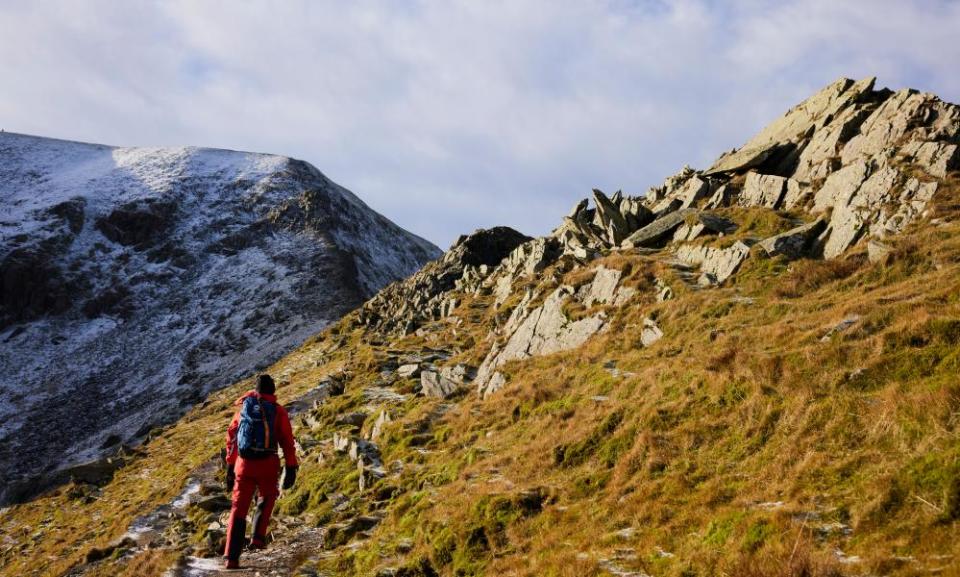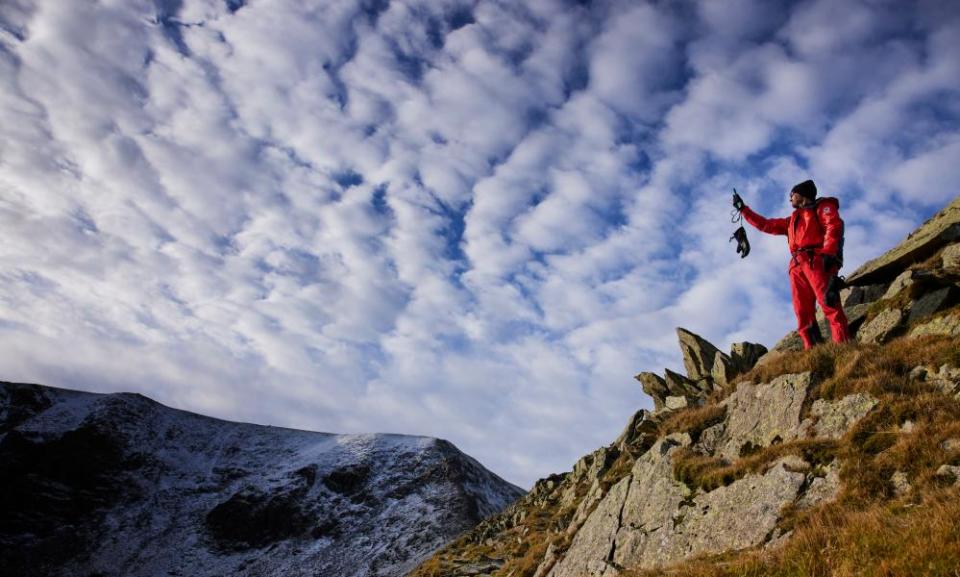‘It’s fantastic to see’: Lake District warms to its new ‘trendy’ status

People from younger and more diverse demographics are exploring area amid boom in nature trips
There are still plenty of lean, grizzled oldies in well-worn gear zipping effortlessly up Lakeland hills like it’s a walk to the corner shop. But there are also younger and more diverse communities exploring the area as hiking, climbing and enjoying nature become “fashionable and trendy” again.
“It is absolutely fantastic,” said Richard Leafe, the chief executive of the Lake District national park. “This is what it is all about.”
Before the pandemic, the average age of visitors to the lakes was over 60 but that was changing, Leafe said. “To see a real swing and change in that, a lot more young people talking about nature, grabbing their selfie moment at the top of the Old Man of Coniston, or England’s highest peak, Scafell Pike … it’s fantastic to see.”
Leafe said the health benefits of being outside were becoming more widely known and talked about. “I think that hiking, walking and being outside … for younger people it has become quite fashionable and trendy again. We’ve seen a lot of that led by influencers on social media, whether that is on Instagram of TikTok.”
The change was important, he said. “We need people to love these places. If they don’t love them, they won’t support the ongoing efforts to conserve them.
“I think the very future of our national parks is in young people’s hands so to see them back energetically and enthusiastically enjoying these spaces is a joy for me personally because a movement was needed to help support national parks in the future.”
Leafe was speaking as the Guardian joined him for a walk up Helvellyn, England’s third-highest peak, to launch the annual fell top assessor scheme. The unique scheme, in its 34th year, involves a rota of three people climbing the mountain every day between December and April.

They report the weather and wind speed and write an account of conditions that is put on the park’s website and matched with Met Office weather forecasts to give, it is hoped, a complete picture of what people will find if they go up the high fells.
Zac Poulton, in his fifth season, is one of the three, along with Jon Bennett and Wes Hunter. “It is a ridiculous job really isn’t it?” Poulton said. “But in a very good way. It’s my escape to the hills.
“You never get bored. Every day is different. We’ve got an absolutely stunning day today, a real good hard freeze, a little bit of snow on the tops, not a cloud in the sky … what’s not to enjoy?”
Other days, when it’s lashing down with rain, are what they call “type two fun” – better in the pub afterwards. Poulton said the lakes in the winter could be as perilous as anywhere in the world, with a wind chill sometimes of -20C or gusts of 85mph that will blow people over.
The key questions people should ask are: do I have the right gear? Do I know what the weather will be like? Do I have the correct knowledge or skills?
Most people came prepared for winter conditions, Poulton said, but not all. Every assessor has a story of a winter walker in trainers and jeans or shorts.
“Usually it is just that lack of awareness of what the risks are. We do get avalanches in the Lake District, temperatures are usually around freezing … most of us who have been out in the hills in winter have suffered from minor hypothermia. It is about being able to recognise it and do something about it. You do see people who have gone beyond that, just pushed on and pushed on.”
One of the best pieces of advice, he said, was to always be prepared to turn back.
The scheme is part of a wider winter safety campaign on the national park runs. Leafe said: “We encourage people to be adventure-wise and to be equipped for their day out in the mountains. To know what the weather is going to be, to have the right gear, and to have the skills and knowledge to know how to use that gear.”

 Yahoo Finance
Yahoo Finance 